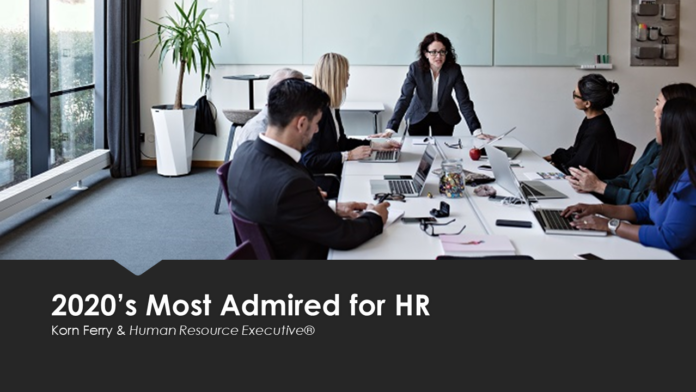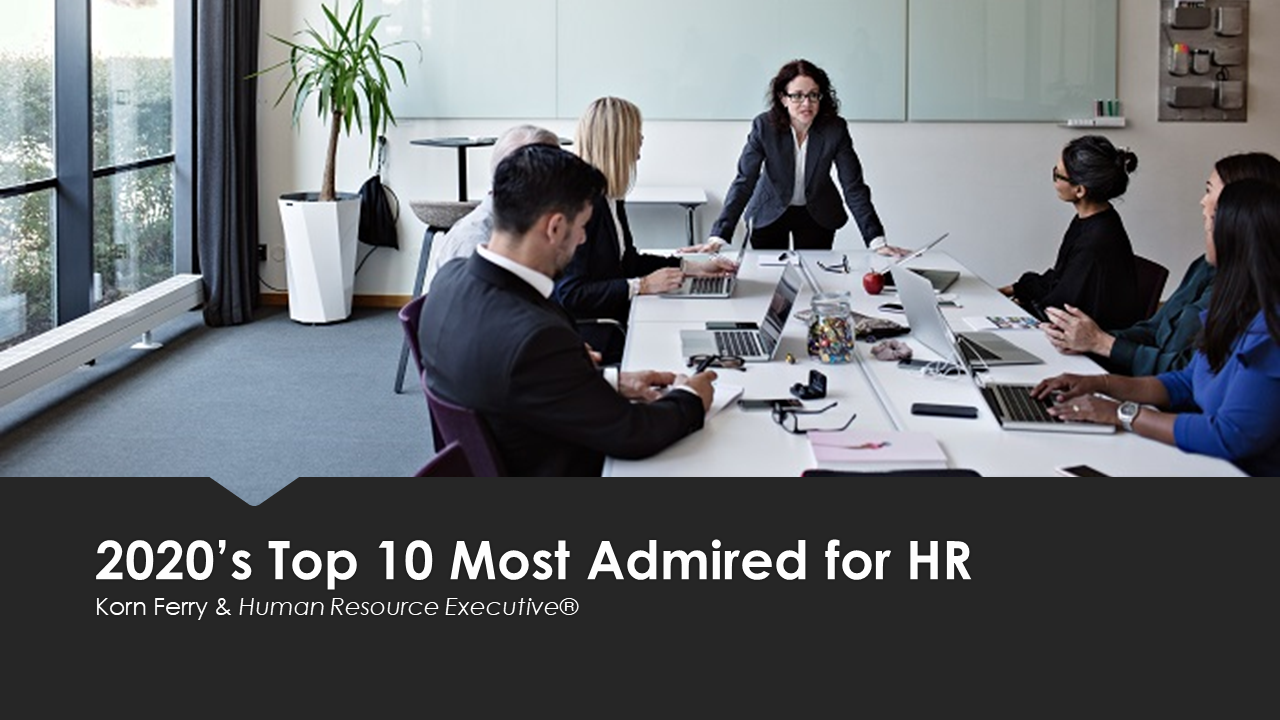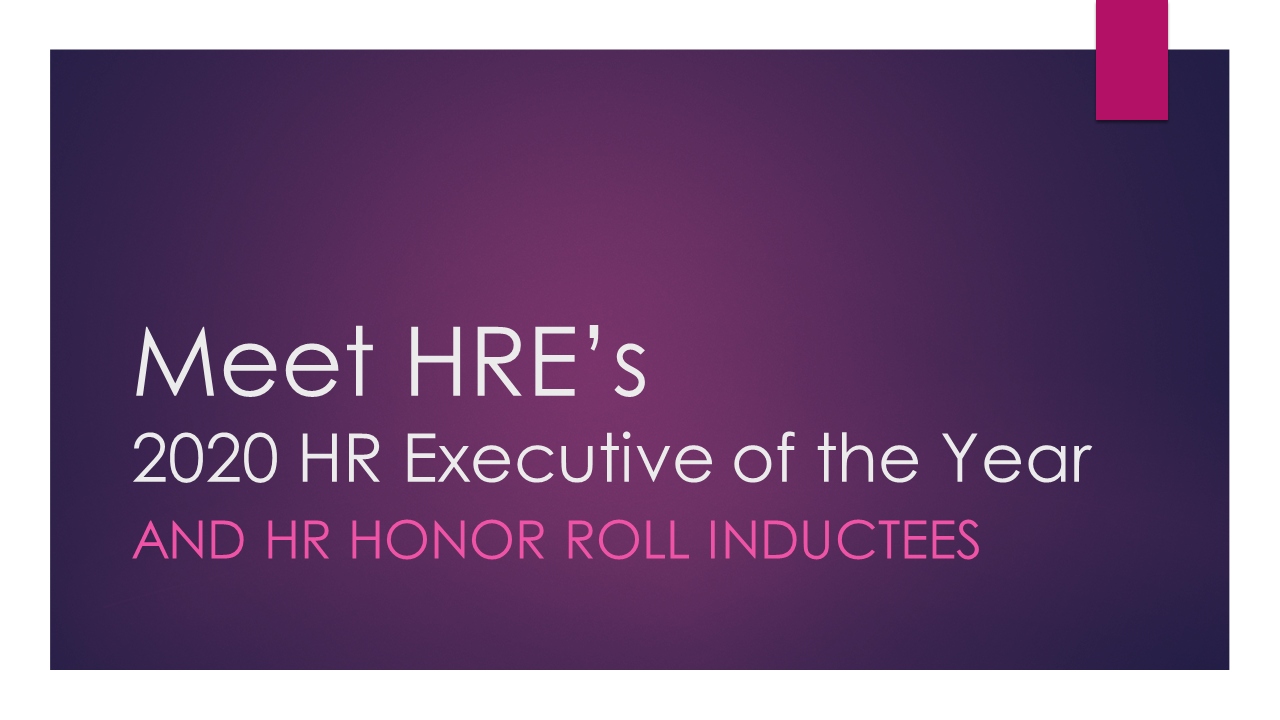Workforce transformation has always been, and always will be, a topic of critical importance for HR–if organizations are unable to evolve and adapt to changing environments, they have no hope of lasting success. But in a global pandemic, amidst ever-growing disruption and social unrest, it feels more important than ever.

For many years, Korn Ferry has produced a list of companies that are “Most Admired for HR” for Human Resource Executive®. Each year, we focus on an area of best practice that distinguishes the best companies from the rest. This year, the focus was on workforce transformation–and with good reason. Most Admired companies don’t reach the pinnacle of their industries without achieving sustained success, which inevitably requires a tried and tested ability to adapt to changing markets and customer needs. So, what can we learn about transformation from the World’s Most Admired Companies (WMACs)?
See more: Here’s the list of the Top 50 Most Admired for HR
The first thing is that, for them, transformation is a capability, not a process–a capability built into their DNA that enables them to transform their organizations not just once but over and over again. Building transformational capability is not easy, but our research has identified some key areas that organizations need to focus on to achieve success.
Purpose and Values

Our survey of executives in companies on the Fortune WMAC list uncovered near-universal belief in the importance of organizational purpose, with 98% saying that it moves leaders toward shared interest and 97% saying that their purpose is embraced by employees. We also saw a huge majority of respondents agreeing that purpose drives decisions in their organizations (93%) and that it is aligned with the company vision and goals (95%).
How does having a clear purpose enhance an organization’s transformational capabilities? An earlier Korn Ferry study of intrinsic motivation found that people who have the resilience to pursue their passions despite setbacks and obstacles are often able to do so because they are working toward a broader purpose. The study also found that higher levels of innovation are achieved when purpose is activated. Furthermore, when leaders redefine their business in broad purpose-centered terms, they can free people up from old, restricting paradigms to offer better solutions to the world.
Related: Disney takes the top spot for Most Admired for HR
Of course, not all purposes are created equal. Too often, we see employees left uninspired because their employers have failed to articulate their purpose in a meaningful way. Transformational organizations, on the other hand, use their purpose to create clarity for their stakeholders. Take these purpose statements from three of our World’s Most Admired Companies: “Empowering others to achieve more” (Microsoft); “Transforming the health of the community, one person at a time” (Centene); and “Organize the world’s information and make it universally accessible and useful” (Google).
Listening to Clients
All of those purpose statements are formulated with the customer at heart. Commitment to the customer is a critical component of any organization’s transformational capability. WMAC executives, we discovered, are more likely than executives at peer companies (companies also participating in the rankings but scoring lower) to listen to clients to guide strategies, even if 180-degree shifts are involved (81% versus 75%). They are also more likely to be distinctly positive about the success of their organization in terms of client satisfaction (80% versus 75%).
Related: How the world’s most admired companies drive D&I
Listening to clients can take your organization’s transformation in unexpected but exceptionally rewarding directions. For example, Microsoft CEO Satya Nadella’s vision for transformation was to ensure that Microsoft software and services were available wherever customers were–even if they weren’t using Windows. As a result, his first big hire was to bring in ex-Qualcomm exec Peggy Johnson to help the organization partner with outside companies. This led to Microsoft’s successful acquisition of LinkedIn and the company’s expansion into 3G broadband, among other transformational efforts aimed at better understanding and reaching customers.
Anticipating and Reacting
In our survey, WMAC executives reported that senior leaders in their organizations are effective in anticipating trends and opportunities (95%) and turning ambiguous situations into opportunities (90%).
This corresponds with our organization transformation study, which found that transformational companies are always looking ahead and expanding the interpretation of their core purpose to explore the new opportunities, business models and product lines that will set them apart. Take Netflix, a company that began life as a DVD-by-mail distribution brand. Imagine what would have happened if the company hadn’t abandoned its original model to focus instead on video streaming, revolutionizing the movie-viewing experience and becoming a leader in the industry. The rest, as they say, would not have been history.
Learning Agility
Ninety percent of WMAC execs agree that their organizations are able to learn quickly and rebound from crises. Likewise, 85% indicate that their senior leaders learn quickly from challenges and failures. While change has proven more challenging for many organizations since the start of the pandemic, a post-COVID follow-up survey with WMACs found that learning agility is still ranked among the top priority items, especially at leadership levels.
See also: Agile organizations need leadership, not management
Of course, learning is as much about failure as success, and truly transformational organizations understand how important it is for leaders and employees to be free to experiment without fear. Astro Teller, who heads X, Alphabet’s moonshot factory, has even built failure into the discovery process, with teams actively seeking what does not work. He explains: “Teams kill their ideas as soon as the evidence is on the table because they’re rewarded for it. They get applause from their peers.”
At Korn Ferry, we use the concept of “self-disruptive leaders” to describe individuals, like Teller, who have high mental agility and who approach complex issues, new challenges and unfamiliar situations with broad curiosity and enthusiasm. Organizations that have such leaders at the helm will be far better-equipped to grow their transformational capabilities.
Building Transformational Capability
If your organization still has a way to go before it matches the World’s Most Admired Companies for transformational capability, the good news is that there are clear, tangible measures to help you get there. Here are the key steps we recommend taking to build transformational capability within your organization:
Look to leaders: Fill your leadership pipeline with future-ready, purpose-driven talent that knows how to learn and solve problems. Although there are many capabilities a company must cultivate to deliver on its purpose, effective and respected senior leaders deliver the greatest impact on financial success.
Create positive employee experiences: Compensation, work/life balance, culture and social responsibility commitments are all important contributors to successful transformation. People who feel valued will want to provide value.
Prioritize R&D: In our study of organizational transformation, the one consistent–and critical–strategy we identified across every industry was investment in research and development. Not only do transformational companies invest 115% more in R&D than the industrial average, but those that increase spending see the largest gains in growth.
Be transparent: If an employee is not well-suited to your company culture, then both company and employee will suffer. Transparency ensures the people you attract are coming in with eyes wide open, ready to get to work.
Show integrity: Effective management and communication practices, CSR values and a healthy culture will all help minimize scandal–and enable you to handle crises effectively if they arise.
What Leaders Need to Do
The situations leaders are facing today are the most demanding many have ever faced. To their credit, they appear to be rising to the challenge. According to a recent Korn Ferry survey, employees give their leaders high scores for “deeply believing in and being passionate about our purpose” and for “decision-making that has become faster since the COVID-19 crisis began.” What can leaders do to build their transformational capability even further?
Compromise: Continually develop your skills in integrating many diverse–and sometimes conflicting–needs. Leaders who are comfortable with trade-offs and ambiguity are most likely to succeed in leading a transforming organization.
Look outwards: Become comfortable with your role as a societal architect. While you may not know all the answers, you and your company operate in a complex and connected world. Be aware of events around you and be prepared to address many audiences with varied interests and needs.
Embrace culture: Work closely with your HR leaders to support a holistic evaluation of workforce capabilities and employee experiences. This way, you can ensure employees bring their full energy to the changes ahead and become your greatest champions for transformation.
Get purposeful: Reflect on what your individual purpose is and find an organization whose purpose aligns. When your personal purpose aligns with your organization, your work will feel empowering and energizing.
See also: These are the ‘revolutionary changes’ coming HR’s way
Looking Ahead
The world’s top organizations view transformation as continuous, not sequential. While renewing their commitment to their vision and goals, they continually look for ways to improve and build on quick wins, propelling them into the next cycle–and the next cycle and the next–until, ultimately, they find themselves in a perpetual state of transformation, where results and rewards fuel further investment in success.
Fortunately, the ability to continuously and successfully transform is one that all companies (not just the World’s Most Admired) can build, as long as they have a clear purpose, stay focused on their customers and ensure they have the right leaders in place.






